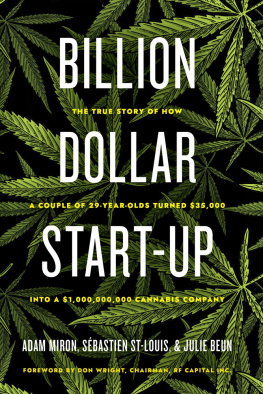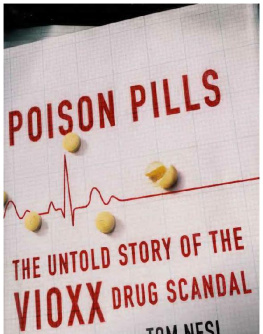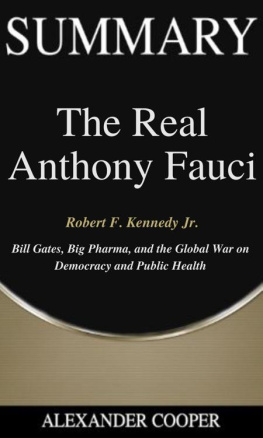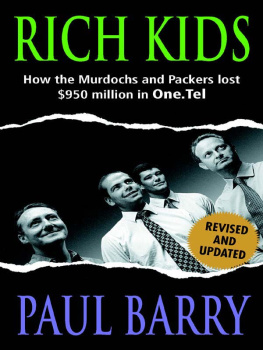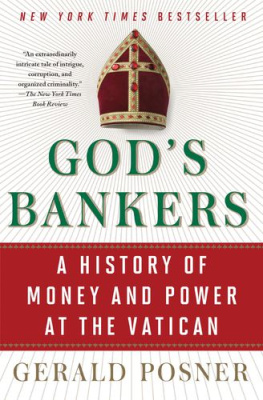Thank you for downloading this Simon & Schuster eBook.
Join our mailing list and get updates on new releases, deals, bonus content and other great books from Simon & Schuster.
C LICK H ERE T O S IGN U P
or visit us online to sign up at
eBookNews.SimonandSchuster.com
CONTENTS
For my remarkable mother, Hilda Werth
CAST OF CHARACTERS
Job titles indicate significant posts at Vertex unless otherwise specified. Years represent total time with the company.
John Alam: former executive vice president for medicines development and chief medical officer (19972006).
Richard Aldrich: former senior vice president and chief business officer (19892000).
Bob Beall: CEO and chairman of the Cystic Fibrosis Foundation.
Joshua Boger: founder and former CEO and chairman; director (1989).
Ken Boger: former general counsel (20012011); brother of the founder.
John Condon : senior vice president of pharmaceutical operations and manufacturing (2005).
Bo Cumbo: former vice president of sales; leader of Incivek commercial team (20102012).
Matthew Emmens: former CEO, president, and chairman (20052012).
Russ Fleischer: senior clinical analyst at the Food and Drug Administration, division of antiviral products; chief examiner for Incivek.
Bink Garrison: former senior vice president and catalyst; drove Vertexs values and vision process (20042009).
Trish Hurter: senior vice president for pharmaceutical development (2004).
Keith Johnson: cystic fibrosis patient; clinical study participant for Kalydeco.
Robert Kauffman: chief medical officer and senior vice president (1997).
Adam Koppel: managing director at Brookside Capital; major Vertex investor.
Ann Kwong: former vice president, hepatitis C franchise (19972012).
Jeffrey Leiden : chairman, president, and current CEO (2012).
John McHutchison: outside clinical investigator for Incivek; later, senior vice president for liver disease therapeutics at Gilead.
Peter Mueller: chief scientific officer and executive vice president for global R&D (2002).
Mark Murcko: former chief technology officer and former chair of the scientific advisory board (19902011).
Paul Negulescu: vice president of research; San Diego site head (2001).
Eric Olson: former vice president and cystic fibrosis program leader (20012013).
Michael Partridge: vice president of investor relations (1997).
Geoffrey Porges: senior analyst for global biotechnology at AllianceBernstein.
Amit Sachdev: senior vice president for global government strategy, market access, and value (2007).
Charles Sanders: former chairman (19962010).
Vicki Sato : former president (19922005).
Ian Smith: executive vice president and chief financial officer (2001).
John Thomson: vice president of strategic R&D networks (1989).
Roger Tung: former vice president of drug discovery (19892004).
Fred Van Goor: head of cystic fibrosis biology, cystic fibrosis research program (2001).
Jack Weet: former vice president of regulatory affairs (20092011).
Nancy Wysenski: former chief commercial officer (20092012).

Joshua Boger
Courtesy of Vertex Pharmaceuticals, circa 1994
INTRODUCTION
Why I Went Back Inside Vertex
Twenty years ago, I wrote a book about a bold and bruising quest. It told the story of a group of entrepreneurial young scientists who left the worlds best drug companythe most admired business in America year after yearbecause they were confident they would be more productive on their own, starting from scratch. They aimed to design better drugs, atom by atom. Most people across the industry thought their project in a refitted construction company garage in Cambridge, Massachusettsto build an organization that could produce dramatically improved medicines to transform the lives of people with serious diseaseswas a pipe dream, a money pit, a consuming act of arrogance, an exhausting feat of hubris, a fools errand.
Dont you think this is five years too early? founding scientist and president Joshua Boger was often asked. Yes, he would say, but five years from now itll be five years too late.
I found their passionate belief in science and in themselves, brimming with high purpose and combative glee, stirring and infectious as I followed them around for a couple of years while they tried to get their cash-starved company, Vertex Pharmaceuticals, off the ground. It was a rocky, exhilarating, eye-opening ride. The chase for new leads was fierce, not just against Mother Merck but also top academic labs, including those led by some of their own scientific advisors, who they feared were sharing Vertexs most prized insights with its rivals. When Boger settled for a tie in a race to publication against one of them, a Harvard professor, he told me: Ill take it. But I want to rub his nose in the dirt and step on his head.
Such was the knife-edge between cooperation and competition in the new biopharmaceutical order. Whatever unease I felt at witnessing up close how ferocious capitalism and scientific rivalriesrather than, say, altruismdrove the search for new lifesaving drugs receded in the wake of Vertexs precocious early success. Boger assembled a team of talented, rampantly motivated biologists, chemists, biophysicists, and computer scientists while he and his chief lieutenant tap-danced their way around the world to raise the money they would need to compete with the pharmaceutical behemoths. Though they were spectacularly outspent and outmanned in every area, he let them organize themselves, rather than try to direct them from above. He let them fail, time and again, until they came up with better approaches. He was a visionary goal setter, an inspirer.
Against all odds, within four years Vertex proved it could compete at the forefront of drug research, against the industry leaders, in several major areas at once. It had gone public and Wall Street considered it a hot stock. What I saw impressed me as a worthy, honest, compelling, even noble effort both to beat and influence the world around ita world where life-changing new drugs were getting harder and harder to find despite the best efforts of hundreds of companies employing tens of thousands of equally gifted and passionate researchers and spending hundreds of billions of dollars on research and development.
That was the story I told in The Billion-Dollar Molecule . I was encouraged by the companys progress; pleased, too, that the book was acclaimed as an insightful look inside the world of commercial medicine. But I understood that the upstart-biotech-looks-promising version of events that I had reported wasnt the full story, or even the main one. Boger had set out to build a drug company, but Vertex hadnt yet produced a drug. Nowhere near it. For him and the other company pioneers, the larger prize wasnt organizing a research group to find better compounds; it was to build a business that could go head-to-head with the worlds most profitable drugmakers against the hardest diseases, involving some of competitive capitalisms most complicated science and most cutthroat marketing maneuvers.
Id described the opening skirmish, not the war.

The modern pharmaceutical industry emerged from one of the great triumphs of twentieth-century science. Before the 1940s, there were medicines and companies that made them, but no one had invented a method for actively finding and developing new drugs. Profits in medicine were disdained as suspectimmoraland the companies were essentially manufacturers of fine chemical compounds. Since their products could do as much harm as good, integrity was key. Then university laboratories advanced a new approach: microbial screening. Systematically harvesting large numbers of chemicals from good bugs and feeding them to bad bugs, then monitoring and improving their activity, drugmakers produced and brought to patients the first antibacterials that had been actively sought and developed.
Next page



